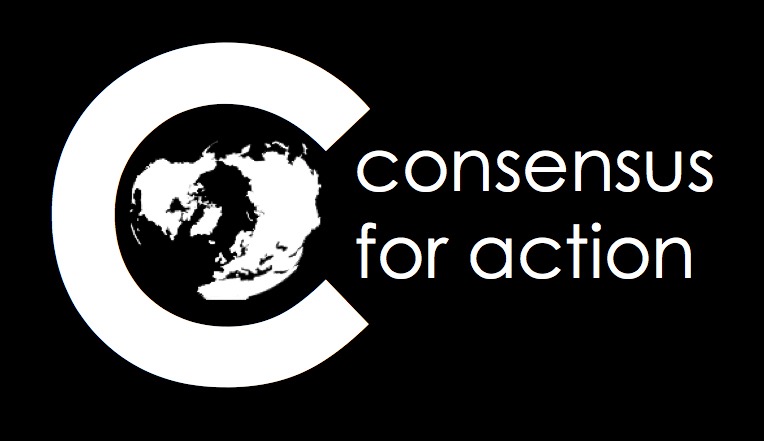ConsensusForAction Blog
Population Growth Is Driving the Migration Crisis
As the migrant crisis in Europe continues to heat up, everyone is quick to recognize the immediate cause: people are fleeing war-torn regions, this time primarily Syria and ISIS-controlled strongholds. But, hiding underneath that proximate cause is a long-term driver that will need to be recognized and dealt with if we hope to keep Europe’s migration crisis of today from becoming the new normal worldwide. That driver is rapid population growth.
As global change scientists who have long studied why species ebb and flow, we see over and over again that, in non-human species, when so many offspring are born that food and living space become too scarce for comfort in the species’ home range, the youngsters make the risky decision to disperse, in search of new territory and a richer life. So, too, with the human race. It is no coincidence that migrants are fleeing exactly those regions where population growth has been extremely high over the past couple of decades. Birth rates up to four times higher than in most European countries have, over the past three decades, nearly doubled the population of the top migrant-producing countries today.

Would-be immigrants at the Greek-Macedonian border. Photo via Wikimedia Commons, By Bundesministerium für Europa, Integration und Äusseres (Arbeitsbesuch Mazedonien), originally posted to Flickr by Österreichisches Außenministerium
As people escape poor, dangerous living conditions they flow towards nations with more resources, which typically also have lower birth rates and more stable population densities. Such immigration is now fueling population growth in many developed countries, including western Europe, despite those countries exhibiting birth rates so low that the number of old “native-born” residents are beginning to outnumber the young. Europe is not alone in seeing a migrant influx, of course: the USA houses more immigrants than any other country, some 20% of the world’s migrants.
What connects the dots of too-rapid population growth, war, and migration? Rapid population growth ultimately results in an intensified competition for resources, jobs, and even such basics as food and water. If this takes place where long-standing animosity between different religious and/or ethnic groups also exists, the situation ignites into full-on war, and people literally flee for their lives. That is exactly the case where ISIS has been expanding strongholds, and why, in 2014, war-torn Afghanistan, Syria, Sudan, South Sudan and Somalia accounted for nearly 20 million of the refugees knocking at the doors of other nations. These areas saw their populations increase between 66% and 160% since 1990, compared to the world average of 27%. In fact, greater than 60% population growth and internal war since 1990 marks fifteen of the twenty-two countries that consistently produced most refugees in the 21st century.
As we go into the future, all demographic models show population continuing to skyrocket in the poorest countries, notably in Africa and the Middle East, including many nations already showing internal conflict. Exacerbating the problem will be impacts of human-caused climate change. Already, unusual climate events have contributed to the refugee-producing crises in Southeast Asia, northeast Africa, and to the Arab Spring uprising, and it is exactly the poorest, most densely populated, and politically least stable regions of the world that are predicted to be hit hardest by rising sea levels, disruption of water and food supplies, and energy shortages slated to intensify as the world tips into a new climate regime. This is the perfect recipe to continue to feed mass migrations.
Without full recognition of these underlying drivers, immigration problems will certainly intensify. Walls and rhetoric will never solve the problem. Refugees will continue to pour across borders by air, land, and sea. However, recognizing that rapid population growth plays the key role in triggering mass migration reveals solutions to the problem that will be effective in the long term.

Scaling the border wall between Mexico and Arizona. U.S. Navy photo by Steelworker 1st Class Matthew Tyson, via Wikimedia Commons.
One critical piece of the solution will be to address the overarching problem of rapid, unsustainable population growth by international programs that provide educational opportunities and basic health care to women in parts of the world where they currently are unavailable. Numerous studies document the rapid reduction of birth rates that result.
Another is international cooperation to improve living conditions in poor parts of the world, and to stabilize fragile governments.
At the same time it will be essential to minimize climate disruption to prevent relocation of hundreds of millions of climate refugees. This can be accomplished through rapid transition from fossil fuels to renewable energy production in the developed world, and leapfrogging over fossil fuels to produce clean energy in developing countries.
Finally, the most important ingredient may well be the heightened influx of immigrants now underway, which provides rich opportunities to learn how to live alongside people from distant lands. Ultimately, fixing the global problems that lead to the immigration crisis will require tolerance and melding of ideas and knowledge from all the diverse cultures that comprise the human race. By accepting the biological realities of immigration, and embracing the chance to learn about each other, we just may be able to build a global society that is more vibrant in the coming decades, rather than one that is increasingly fragmented by fear and isolationism.
By Elizabeth A. Hadly, hadly@stanford.edu and Anthony D. Barnosky, barnosky@berkeley.edu
Hadly and Barnosky are professors of biology at Stanford University and University of California at Berkeley, respectively, and authors of the new book: End Game, Tipping Point for Planet Earth? (2015, HarperCollins / WilliamCollins, London), which will be published in the United States in April under the title Tipping Point for Planet Earth: How Close Are We To The Edge? (Thomas Dunne / St. Martin’s Press, New York).

